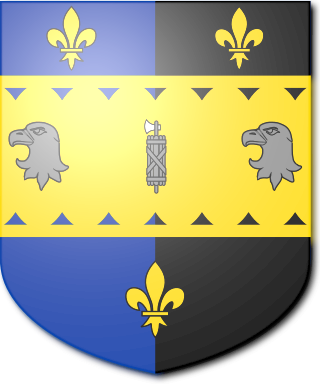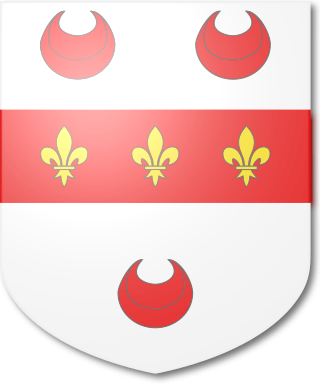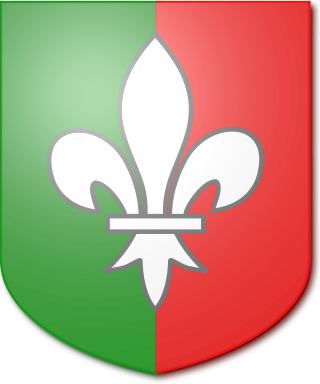
The Austin Baronetcy, of Red Hill in the parish of Castleford in the West Riding of the County of York, is a title in the Baronetage of the United Kingdom. It was created on 16 July 1894 for John Austin, Liberal member of parliament for Osgoldcross.

The Anson baronetcy, of Birch Hall in the County Palatine of Lancaster, is a title in the Baronetage of the United Kingdom held by a branch of the Anson family.

The Bagge Baronetcy, of Stradsett Hall in the County of Norfolk, is a title in the Baronetage of the United Kingdom. It was created on 13 April 1867 for William Bagge, Conservative Member of Parliament for West Norfolk. The sixth Baronet was Chairman of the West Norfolk District Council between 1976 and 1977.

The Whitehead Baronetcy, of Highfield House in Catford Bridge in the County of Kent, is a title in the Baronetage of the United Kingdom. It was created on 26 November 1889 for James Whitehead, Lord Mayor of London between 1888 and 1889 and later member of parliament for Leicester. His younger son, the third baronet, was also a Member of Parliament.

There have been two baronetcies created for the Guise family, one in the Baronetage of England and one in the Baronetage of Great Britain. The latter creation is extant as of 2014.

The Ford Baronetcy, of Westerdunes in the County of East Lothian, is a title in the Baronetage of the United Kingdom. It was created on 27 July 1929 for the Unionist politician Patrick Ford. He represented Edinburgh North in the House of Commons from 1920 to 1923 and 1924 to 1935. As of 2021, the title is held by his grandson, the third Baronet, who succeeded his father in 1989.

The Broadbent Baronetcy, of Longwood in the Parish of Huddersfield in the West Riding of the County of York, and of Brook Street, in the Parish of St George Hanover Square in the County of London, is a title in the Baronetage of the United Kingdom. It was created on 10 August 1893 for the noted physician William Broadbent, personal physician to Queen Victoria. The title descended from father to son until the death of his grandson, the third Baronet, in 1987. The late Baronet was succeeded by his first cousin once removed, the fourth Baronet. He was the grandson of Walter Broadbent, third son of the first Baronet.

The Hogg, later Lindsay-Hogg Baronetcy, of Rotherfield Hall in Rotherfield in the County of Sussex, is a title in the Baronetage of the United Kingdom. It was created on 22 December 1905 for Lindsay Hogg, Conservative Member of Parliament for Eastbourne from 1900 to 1906. He assumed by Royal licence the additional surname of Lindsay before that of Hogg in 1906.

The Wiggin Baronetcy, of Metchley Grange in Harborne in the County of Stafford and of Garth Gwynion in Machynlleth in the County of Montgomery, is a title in the Baronetage of the United Kingdom. It was created on 17 June 1892 for Henry Wiggin. He was the founder of Henry Wiggin and Co Ltd, manufacturers of specialty metal products, and also represented Staffordshire East and Handsworth in the House of Commons. The second Baronet was High Sheriff of Staffordshire in 1896. The third Baronet was a colonel in the army and served as High Sheriff of Warwickshire in 1942. The fourth Baronet was high sheriff of Warwickshire from 1975 to 1976 and a deputy lieutenant of the county in 1985.

The Wrixon-Becher Baronetcy, of Ballygiblin in the County of Cork, is a title in the Baronetage of the United Kingdom. It was created on 30 September 1831 for William Wrixon-Becher, Member of Parliament for Mallow from 1818 to 1826. Born George Wrixon, he assumed by Royal licence his mother's maiden surname of Becher in 1831. The Becher family were major landowners in County Cork.

The Oakeley Baronetcy, of Shrewsbury, is a title in the Baronetage of Great Britain. It was created on 5 June 1790 for the Indian administrator Charles Oakeley. He served as Governor of Madras from 1790 to 1794. Frederick Oakeley was the second son of the first Baronet.

The Currie Baronetcy is a title in the Baronetage of the United Kingdom. It was created on 11 January 1847 for Frederick Currie, Foreign Secretary to the Indian Government and a member of the Supreme Council of India. He was a grandson of William Currie (1721–1781), nephew of William Currie (1756–1829), who was Member of Parliament for Upper Gatton and Winchelsea, and the brother of Vice-Admiral Mark John Currie.

The Wraxall Baronetcy, of Wraxall in the County of Somerset, is a title in the Baronetage of the United Kingdom. It was created on 21 December 1813 for Nathaniel Wraxall. He was in the East India Company Civil Service, an author and member of parliament for Hindon, Ludgershall and Wallingford. His grandson, the third Baronet, was an author.

The Farrington Baronetcy, of Blackheath in the County of Kent, is a title in the Baronetage of the United Kingdom. It was created on 2 December 1818 for General Sir Anthony Farrington, 1st Baronet.

The Levinge Baronetcy, of High Park in the County of Westmeath, is a title in the Baronetage of Ireland. It was created on 26 October 1704 for Richard Levinge, Speaker of the Irish House of Commons and Lord Chief Justice of the Irish Court of Common Pleas. The seventh Baronet sat as Liberal Member of Parliament for Westmeath from 1857 to 1865.

The ffolkes Baronetcy, of Hillington in the County of Norfolk, is a title in the Baronetage of Great Britain. It was created on 26 May 1774 for Martin ffolkes, FRS later High Sheriff of Norfolk and Member of Parliament for King's Lynn. The second Baronet represented Norfolk and Norfolk West in the House of Commons while the third Baronet represented King's Lynn. The fifth Baronet was Honorary Chaplain to Queen Victoria, Chaplain-in-Ordinary to Edward VII and George V and Chaplain to Edward VIII and George VI.

The Milman Baronetcy, of Levaton-in-Woodland in the County of Devon, is a title in the Baronetage of Great Britain. It was created on 28 November 1800 for Francis Milman, Physician-in-Ordinary to King George III and President of the Royal College of Physicians. The seventh Baronet was a brigadier-general in the British Army.

The Smith, later Smith-Marriott Baronetcy, of Sydling St Nicholas in the County of Dorset, is a title in the Baronetage of Great Britain. It was created on 1 June 1774 for John Smith, High Sheriff of Dorset in 1772. The second Baronet married Elizabeth Anne, daughter of Reverend James Marriott. The fourth Baronet assumed by Royal sign-manual the additional surname of Marriott. The fifth Baronet was High Sheriff of Dorset in 1873.

The Hoghton or Houghton, later Bold-Hoghton, later de Hoghton Baronetcy, of Hoghton Tower in the County of Lancashire, is a title in the Baronetage of England. It was created on 22 May 1611 for Richard Hoghton, Member of Parliament for Lancashire. The Hoghton family had been landowners in Lancashire since the reign of King Stephen and had been Knights of the Shire for Lancashire since the 14th century. The second Baronet represented Clitheroe and Lancashire in the House of Commons and was a Royalist leader during the Civil War. The third and fourth Baronets both sat as Members of Parliament for Lancashire. The fifth Baronet was Member of Parliament for Preston and East Looe while the sixth and seventh Baronets represented Preston. The eighth Baronet assumed the additional surname of Bold. In 1892 the ninth Baronet resumed, by Royal licence, the ancient family surname of de Hoghton.
The Arbuthnot baronetcy of Kittybrewster in Aberdeenshire was created in the Baronetage of the United Kingdom on 26 February 1964 for John Sinclair Wemyss Arbuthnot, for services to church and state. As of 2025, the baronetcy is marked vacant on the Official Roll.




















